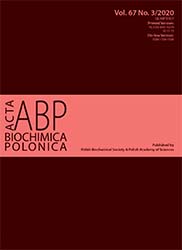New mutations in KCNT2 gene causing early infantile epileptic encephalopathy type 57: Case study and literature review
Abstract
Purpose. Early infantile epileptic encephalopathy (EIEE) 57 belongs to a group of encephalopathies with early-onset and characterised by severe electroencephalogram abnormalities, seizures, developmental delay and intellectual disability. Method. We carried out Whole Exome analysis using Next Generation Sequencing (NGS) and bioinformatic analysis performed to find mutation associated with the patient phenotypes. The effect of the mutation on protein structure analysed by PolyPhen2 and Swissmodel ExPASy. Results. In this study, we evaluated two unrelated Turkish males diagnosed with EIEE type 57 to investigate the genetic cause of this disease. Whole exome sequencing revealed mutations in KCN2 gene, which is a member of Potassium channels (KCN) gene family associated with epileptic encephalopathies. Two mutations, c.545A>T (p.Asn182Ile and c.2638C>A (p.Leu880Met) were reported here as a novel mutation. Conclusions. Our findings implicate the genotype-phenotype correlation of these mutations. Furthermore, the computational analysis showed their effect on protein binding site and function suggesting their role in the development of early infantile epileptic encephalopathy 57.
Acta Biochimica Polonica is an OpenAccess quarterly and publishes four issues a year. All contents are distributed under the Creative Commons Attribution-ShareAlike 4.0 International (CC BY 4.0) license. Everybody may use the content following terms: Attribution — You must give appropriate credit, provide a link to the license, and indicate if changes were made. You may do so in any reasonable manner, but not in any way that suggests the licensor endorses you or your use.
Copyright for all published papers © stays with the authors.
Copyright for the journal: © Polish Biochemical Society.


